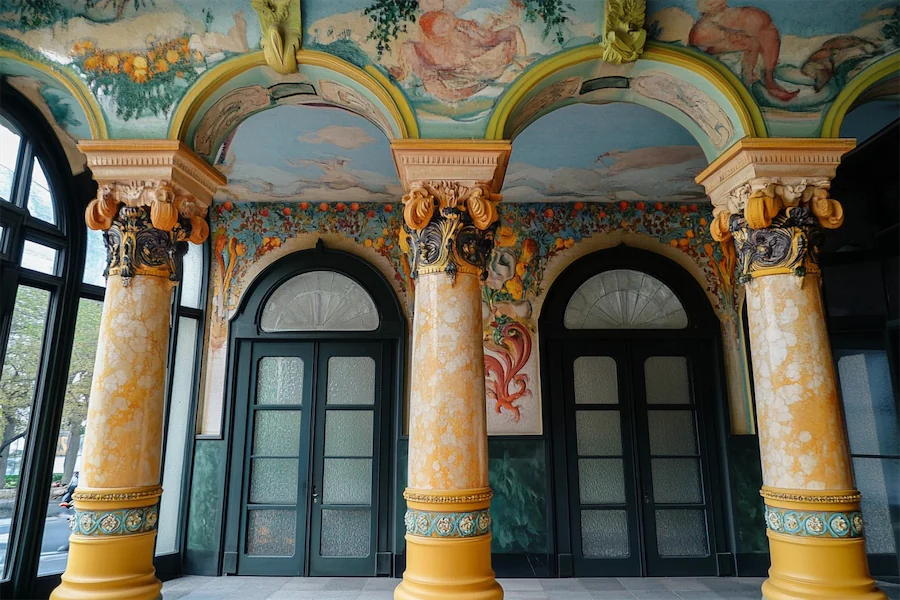Art Nouveau columns are a hallmark of the Art Nouveau movement, which flourished between 1890 and 1910 across Europe and the United States. This style sought to break away from traditional, historical designs, embracing a new aesthetic inspired by natural forms and organic lines.
History and Origins of Art Nouveau Columns
Emerging as a reaction against the academic art and industrial mass production of the 19th century, Art Nouveau aimed to create a harmonious and unified artistic experience. Architects and designers drew inspiration from the unruly aspects of the natural world, incorporating sinuous, flowing lines and botanical motifs into their creations.
This approach extended to architectural elements, including columns, which became canvases for artistic expression.
Key Features of Art Nouveau Columns
Art Nouveau columns are distinguished by several characteristic features:
- Organic Forms: Columns often mimic natural shapes, such as plant stems or tree trunks, with designs that flow seamlessly into the surrounding architectural elements.
- Floral and Faunal Motifs: Decorative elements frequently include stylized flowers, leaves, and animals, intricately carved or molded to enhance the column’s aesthetic appeal.
- Sinuous Lines: Emphasizing curvature and fluidity, these columns eschew rigid, straight lines in favor of graceful, undulating forms that convey a sense of movement.
- Integration with Structure: Art Nouveau columns are designed to be integral to the building’s overall aesthetic, often blending into arches, doorways, and other structural components to create a cohesive visual flow.
Applications of Art Nouveau Columns
Art Nouveau columns were employed in various architectural contexts:
- Residential Buildings: In homes and apartment buildings, these columns added elegance and artistic flair to facades, balconies, and interior spaces.
- Public Structures: Train stations, theaters, and museums featured Art Nouveau columns to create inviting and aesthetically pleasing environments.
- Commercial Edifices: Department stores and office buildings utilized these decorative columns to convey modernity and sophistication.
Notable examples include the entrances of the Paris Métro, designed by Hector Guimard, which showcase the quintessential Art Nouveau column with its organic, plant-like forms.
Considerations When Choosing Art Nouveau Columns
When incorporating Art Nouveau columns into architectural designs, consider the following:
- Material Selection: Utilize materials that can be shaped into intricate designs, such as wrought iron, cast iron, or carved stone, to faithfully reproduce the detailed motifs characteristic of the style.
- Craftsmanship: The complexity of Art Nouveau designs requires skilled artisans to execute the detailed work, ensuring the columns’ artistic integrity and structural soundness.
- Contextual Harmony: Ensure that the columns complement the overall architectural design, maintaining the fluidity and organic harmony central to Art Nouveau aesthetics.
Conclusion
Art Nouveau columns exemplify a departure from traditional architectural norms, embracing natural forms and intricate designs to create harmonious and aesthetically captivating structures. Their enduring appeal continues to influence contemporary architecture and design, celebrating the beauty of nature through artistic expression.
